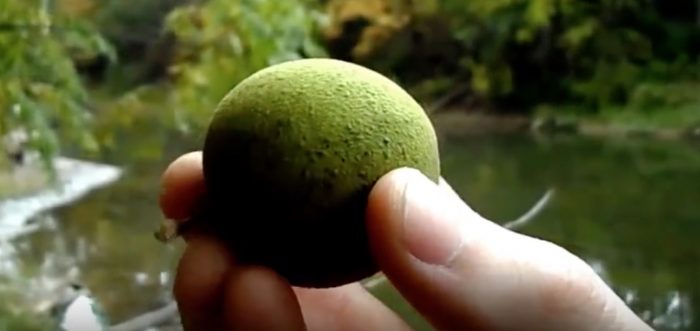Whether you’re camping for an extended period of time or just going for an afternoon hike, you never know when the food you brought could be comprised. It could even be something as silly as an animal stealing it away. These nuts could be the key to keeping us going when there’s nothing else safe to eat:
1. Acorns
You’ll need to do some prep work, which essentially involves shelling the nuts and soaking them in water to leach out the bitter tannins. The bitterness varies depending on the oak variety, but most require a good soak in warm water for a few hours.
Some people will then dry the acorns and crush them into a flour.
You also could roast them in a dry frying pan over an open fire for 15 to 20 minutes. Toss them from time to time, or put them on a baking sheet in a 375-degree (Fahrenheit) oven for 15 to 20 minutes.
2. Black walnuts
Black walnuts are easy to find. Their large, green husks will often litter the ground beneath the tree. You can try to shake a few down.
The outer husk of a black walnut is bright green, but wear gloves when you collect them. They will actually stain your hands black. You’ll need to remove the outer husk. This can be done by rolling a nut underfoot on a hard surface or using a hammer.
Once you have shelled the walnuts, rinse them in a few changes of cold water. The water will turn black and you should continue to soak and rinse them until the water runs clear. Black walnuts are high in Omega-3 fatty acids and proteins, and have been shown to lower cholesterol and to act as an anti-inflammatory. Wear goggles when you’re cracking them open because they can splinter.
3. Chestnuts
Horse chestnuts are toxic, while the sweet (English) chestnut is not. If you’re not sure of the variety of chestnut you may have found, bring one home and check the Internet.
Chestnuts are surrounded by a hard, spiky shell. Wear gloves when you gather them and try to remove the outer shell as soon as possible.
If roasting in an oven, preheat the oven to 400 degrees (Fahrenheit) and cut an “x” into each one of the chestnuts. Place them on a sheet of foil and roast for 30 minutes. The inner shells will crack open at the incisions you made.
If you’re going to roast over a fire, use a cast iron frying pan.
Have you eaten any of these nuts when in the wilderness? What other edible nuts have you discovered?
Article Source: Off The Grid News
